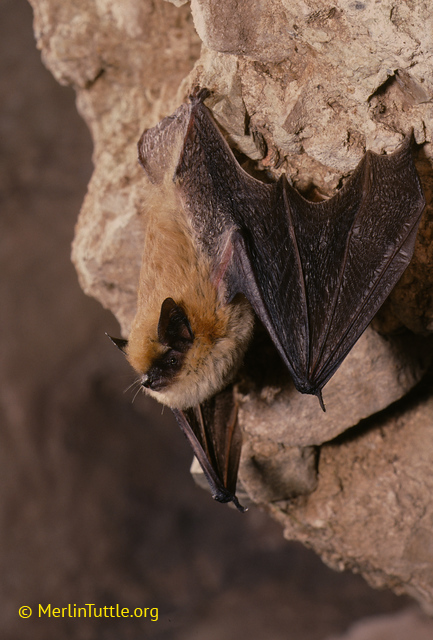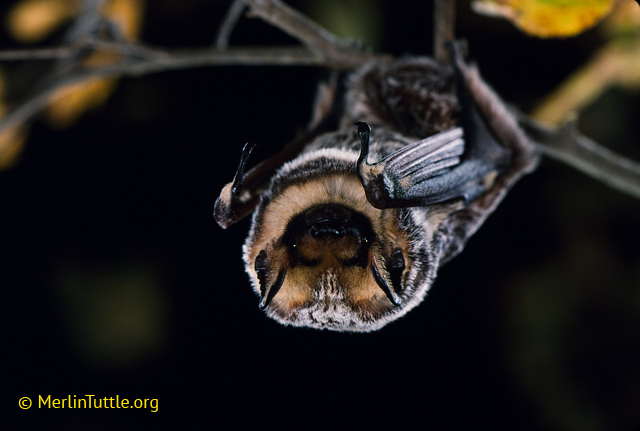Our Work

California myotis
Working Together to Conserve Bats
Colorado Bat Watch is a collaborative effort to study and conserve bats.
Bats face threats from habitat destruction, white-nose syndrome, wind energy development, and other stresses. Without concerted action to conserve bats in Colorado, these threats could lead to the loss of local bat populations that benefit humans and ecosystems, and contribute to declines of some bat species across North America.
We bring together scientists, students, and people from all walks of life to generate knowledge about bats and conserve bats and their habitat in Colorado.
Our initiatives were developed collaboratively by a team of experts from Rocky Mountain Wild, the U.S. Forest Service, Colorado Parks and Wildlife, Colorado Natural Heritage Program, and the North American Bat Monitoring Program. We focus on research and conservation work that complements and contributes to other ongoing bat research and conservation plans in Colorado.
Identify Bat Roost Sites
We work to increase knowledge about where bats roost in Colorado, by crowdsourcing information from the public on the locations of bat roost sites. We are particularly interested in information on roost sites in trees, talus, bat houses, barns, attics, outbuildings, and other structures.
Roost sites are critically important in the daily lives of bats. They provide shelter and protection from predators when bats are not active during the day or at night. In spring and summer, a roost offers a safe place for female bats to give birth and rear young. If disturbed at this sensitive time, female bats may abandon the roost and their young. To survive winter, hibernating bat species need roost sites with stable temperatures and high humidity, such as caves, mines, and rock crevices.
Loss of habitat for roosting is one of the primary threats to bats. By sharing observations of bats and bat roost sites, the public contributes to scientific research and informs conservation efforts.

Western small-footed myotis

Hoary bat
Monitor Bat Colonies
We engage community scientists in monitoring bat colonies. Volunteers collect data that will improve the knowledge about local bat populations, and inform efforts to address emerging threats to bats.
We are currently working to develop our bat colony monitoring program. We anticipate that the earliest opportunity to volunteer to monitor bat colonies will be in the summer of 2023. If you sign up to be a bat colony monitoring volunteer, we will email you as soon as volunteer opportunities are available.
Inspire People to Conserve Bats
Colorado Bat Watch strives to connect people with the bats they might find in their own backyard through educational events, bat walks, and community science. Our hope is that these experiences will foster a community of bat ambassadors who appreciate bats and the habitat they live in and can help us conserve bats throughout Colorado.

Allen's big-eared bat
Inform Conservation Efforts
To conserve Colorado’s bats, biologists and others involved in public land management need to know where bats are roosting and whether populations are declining in Colorado. These insights can inform conservation plans and protect wildlife for future generations.
The data that Colorado Bat Watch community scientists collect through our roost site identification and colony monitoring initiatives is available to biologists working to:
- Learn more about the distribution of bat species in Colorado.
- Learn more about how Colorado bat species select roost sites.
- Identify biologically important roost sites.
- Identify roost sites suitable for white-nose-syndrome vaccine testing.
- Identify and work collaboratively to decrease threats at biologically important roost sites.
- Monitor how colonies respond to potential threats, including white-nose syndrome.
- Improve knowledge of species distributions and population trends across North America (through the North American Bat Monitoring Program)
- Meet objectives and research needs outlined in the 2018 Colorado Bat Conservation Plan, U.S. Forest Service Region 2’s 2013 White-nose Syndrome Adaptive Management Strategy Environmental Assessment, Colorado Parks and Wildlife’s White-nose Syndrome response plan & Colorado’s State Wildlife Action Plan.
- Implement various other conservation strategies for bats (e.g. strategies being implemented by the Colorado Bat Working Group and the Western Bat Working Group).
Our Team
Megan Mueller, Conservation Biologist, Leadership Team, Rocky Mountain Wild
Paige Singer, Conservation Ecologist, Leadership Team, Rocky Mountain Wild
Melissa Dressen, Regional Wildlife Program Leader, Rocky Mountain Region
Mikele Painter, Biologist, South Platte Ranger District, Pike National Forest
Tina Jackson, Species Conservation Coordinator, Colorado Parks and Wildlife
Rob Schorr, Zoologist, Colorado Natural Heritage Program; Director, Climbers for Bat Conservation
Chris Talbot-Heindl, Communications Director, Leadership Team, Rocky Mountain Wild
Anneke Ivans, Website Designer, Rocky Mountain Wild Consultant
Past Team Members:
Wyatt Ortega, Graduate Student, Master of Conservation Leadership Program, Colorado State University
Michael Segala, Graduate Student, Master of Conservation Leadership Program, Colorado State University
Sarah Colbert, Environmental Studies Program Student Intern, University of Colorado
Maria Vicini, Science Communications Consultant, Forest Sciences Graduate Program, Colorado State University
Sophia Corley, Communications Consultant, Environmental Nonprofit Contract Worker
Contact Us
Email: bats@rockymountainwild.org
Mail: Rocky Mountain Wild
1536 Wynkoop St, Ste 900
Denver, CO 80202


